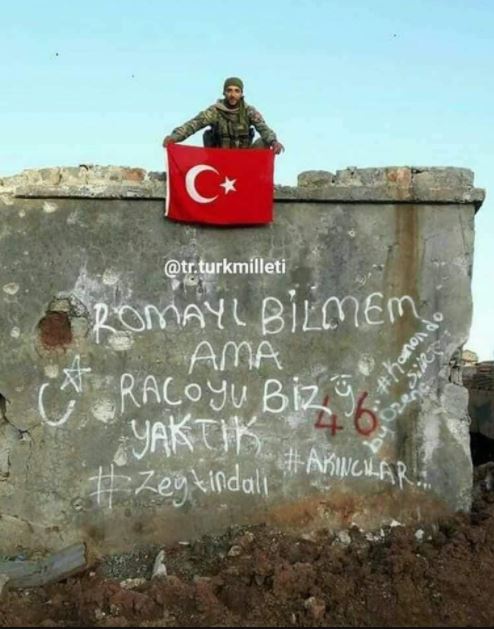This is part three of a three-part series. Read part one here: https://npasyria.com/en/53302/
The chaos and terror that struck fear into the hearts of the people of Syria’s Afrin did not end when the bombs and missiles stopped falling. For the next three years, and until the time of this report, violations by Turkish-backed forces and the Turkish military have continued nonstop.
Violations
With third anniversary of the Turkish incursion of Afrin, the Human Rights Organization – Afrin, who document and monitor violations in the region, issued a statement on January 3, 2021 in which it revealed the toll of the violations against Afrin and its civilians.
According to the organization, during the past three years of occupation:
- More than 7,343 civilians were kidnapped, and the fate of more than half of them is still unknown.
- More than 604 civilians were killed, 498 of whom lost their lives under Turkish bombardment, and the rest of whom were tortured to death by Turkish-backed armed groups.
- 696 civilians were injured during the invasion, including 303 children and 213 women.
- 207 blasts occurred due to landmines and VBIEDs.
- More than 314,400 olive trees – the most vital sector of Afrin’s economy, and some of which were nearly a century old, were cut and logged.
- More than 11,000 olive trees were burned.
- More than 11,000 acres of agricultural land was burned (one-third of the total agricultural land in Afrin).

In addition to these violations, Turkish-backed armed opposition groups have seized dozens of civilian homes and properties and turned them to headquarters, detention centers, and housing for militants’ families who came from outside Afrin.
The organization added that more than 28 historical sites and 15 religious’ shrines, most of which have been registered on the UNESCO World Heritage List, were destroyed by the militants, and some others were turned into mosques.
“Since the beginning of the Turkish offensive, we tried to communicate with international and European organizations in addition to media institutions. At the beginning, there was no response, but with the continuation of the violations and the activists’ insistence, they were forced to open investigations into the violations,” Amina Mesto, an activist from Afrin, told North Press.
“Our mission as activists, is to record and document violations in Afrin and send them to organizations such as the Human Rights Watch (HRW) that contact the civilians who are subjected to oppression by the armed groups and the Turkish occupation forces,” she added.
Mesto pointed out that they have also reported documented violations to the German Foreign Ministry and some other European organizations such as the German World Hunger Aid (Welthungerhilfe) and the European Court of Human Rights.
Demographic change
Observers of the conflict in Afrin say that one of the most devastating long-term effects of the occupation is the Turkish plan to change the demographics of the once Kurdish-majority region.
“The statistics for the population of Afrin region reached 446,293, according to the official census of 2004. According to statistical theories, the rate of increase in the Middle East doubles every twenty years, so that the population of Afrin might have been 624,810 in 2018,” Abdullah Shikaki, researcher from Afrin who is now living in Qamishli, told North Press.
“It is expected that the percentage of the Arabs in Afrin is 3%. In 1958, 15,000 persons came and settled in Afrin. From 2012 to 2018, many of them came to the region fleeing the civil war. Based on this, their number estimated at about 200,000,” he added.
Now, hundreds of Afrin’s people who fled the Turkish invasions are residing in five camps and dozens of semi- and completely destroyed villages in Aleppo’s northern countryside, in addition to those taking refuge in Lebanon, Turkey, and the Iraqi Kurdistan region. Meanwhile, more than 400 families from Eastern Ghouta, Idlib, Homs, and other regions have been settled in their houses.
Shikaki stated, “Turkey carried out forced displacement and demographic change with the aim of annexing Afrin, just as it did in the Sanjak of Alexandretta, northwestern Syria, in 1939.”
Afrin in the past
“I can say that Afrin was like Noah’s Ark, as all the civilians fled to it due to the stability and security it achieved as opposed to the other Syrian regions,” Hevi Mustafa said.
Amina Mesto said, “Despite the blockade imposed by Turkish-backed armed groups, the city was flourishing every day and turning into an important economic center in the region.”
Three years have passed while Afrin and its people are still suffering from the occupation.
In Afrin’s Rajo district sits a chilling reminder in the Turkish language graffitied onto a wall by a group of Turkish militants, belying their goal to not only capture Afrin, but to restore the former Ottoman Empire:
“We do not know about Rome, but we burned Rajo.”
